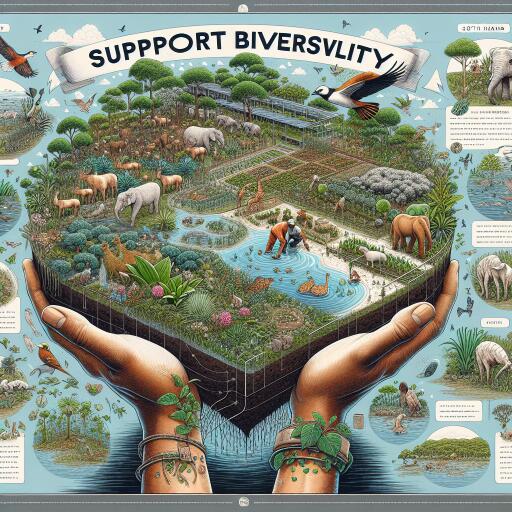
NSW Plan Puts Biodiversity, Landholder Support First
In a significant environmental policy shift, the New South Wales (NSW) government has unveiled a comprehensive strategy aimed at reinforcing the state’s commitment to biodiversity and sustainable land management. This strategic move, spearheaded by the Minns Labor Government, is designed to address and rectify the concerns highlighted in the statutory reviews of the Biodiversity Conservation Act 2016 and the native vegetation provisions within the Local Land Services Act 2013.
The devised blueprint marks a departure from past practices, propelling NSW towards an integrative approach that prioritizes the protection of the environment while acknowledging the vital role landholders play in this process. The government’s response encapsulates a broad spectrum of initiatives poised to transform the statewide approach to environmental preservation, native vegetation management, and biodiversity conservation.
At the epicenter of this ambitious agenda are three crucial commitments outlined for immediate action during the current governmental term. These involve reforming the biodiversity offsets scheme, curbing excessive land clearing, and amplifying environmental protection mechanisms.
The strategic response highlights a series of both immediate and long-ranging actions tailored to enhance biodiversity protection and land management practices. Central to these endeavors is the understanding that a shift in strategy is imperative for setting nature on a trajectory of recovery. Key aspects of the strategy include acknowledging the symbiotic relationship between biodiversity and Aboriginal culture, launching a NSW Nature Strategy to oversee ecosystem protection, restoration, and enhancement initiatives, and improving support for landholders to participate in natural capital markets.
This comprehensive strategy also signals a move towards achieving ‘net positive’ outcomes for biodiversity through amendments to the Biodiversity Conservation Act. These amendments stipulate a more deliberate consideration of biodiversity in planning and development processes and bolster the management of native vegetation on private lands through enhanced regulatory frameworks.
The NSW Government asserts its dedication to a collaborative approach with the community and stakeholders in implementing these initiatives. This partnership aims to ensure that natural resources across the state are managed effectively to benefit social, economic, and environmental interests alike.
Reflecting on the urgency of the situation, Minister for the Environment Penny Sharpe emphasized the critical state of biodiversity in NSW, stating, “We cannot ignore the truth: biodiversity in NSW is in crisis. Our goal must be to leave nature better off than we have found it.” She further highlighted the need for innovative solutions and a comprehensive effort toward proactive landscape-scale biodiversity protection, restoration, and management.
On the agricultural front, Minister for Agriculture and Regional NSW Tara Moriarty reinforced the government’s commitment to improving the management of native vegetation on private rural land. This includes facilitating landholder access to emerging natural capital markets and supporting sustainable agricultural practices that are harmonious with biodiversity conservation efforts.
The strategy also sets the stage for an independent review by the Natural Resources Commission in 2025. This review aims to provide the government with advice and options to further fortify biodiversity protections and enhance the support and value provided to landholders, ensuring a balanced approach between environmental preservation and agricultural productivity.
The NSW Government’s proactive stance towards biodiversity, enhanced native vegetation management, and landholder support marks a new chapter in the state’s environmental conservation efforts. By fostering collaborative relationships and providing a scalable roadmap for the future, NSW aims to reverse biodiversity loss and nurture a sustainable environment for generations to come.





Leave a Reply